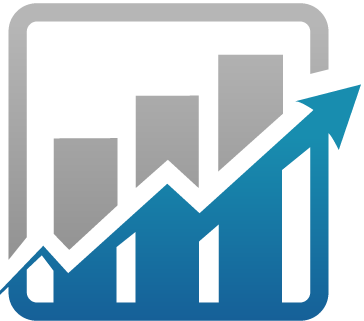Understanding Real Time Analytics
The world is trending in “Real-Time”, squeezed down to hashtags in various social media platforms and search engines showing trending topics to live previews. One such trending topic is “Real Time Analytics”.
So what is it anyway? To answer this question lets break it down in to three parts: World Wide Web, Data Analytics and Real Time.
A long time ago in World Wide Web (www), far far away there were only a handful of useful websites and very limited traffic or web visitors. What is the oldest website you can recall? With the advent of new age technologies today we have roughly around 3.2 billions of internet users and 328 million new devices being connected to the internet each month, communicating with each other at speeds ranging in gigabytes for almost everything we need on a daily basis right from education, grocery shopping, social networking, a doctors appointment, paying utility bills etc.
With this explosive growth of Internet user base or netizens, it became imperative to monitor this data for national security, business & e-commerce and interests of consumerism. This is where data analytics started taking shape. The early days of data or web analytics were predominantly some basic software that monitored total number of online visitors and how many eyeballs visited a website.
Businesses soon realised that the crucial information like where these visitors came from, what brought them there, when and why they left was of great value for both the consumers and the sellers. The development of BI(business intelligence) software which uses mostly logic, mathematics and statistical models to analyse the traffic boomed within a few years. The insights were very powerful and the predictive nature of the outcomes became more and more accurate about consumer behaviour and its popularity gained across industries from banking, transportation, defence to hospitality.
To make things more exciting, these analysis and reporting’s became lightning fast i.e. you can view the computed output almost immediately after your inputs within a few seconds, hence “Real-Time”.
The roots of Real Time Data Analytics lie in the Aviation Industry, Defense Systems and Robotics. These sectors had dynamic functions that accessed live data in real time to deliver highly responsive results.
Real-Time Analytics is considered a quantum leap in the field of Data Analytics since it provides outcomes of an event at the same time as it is occurring.
Business owners could experience the thrill of watching live visitors to their website, their browsing behaviour and while at it they could even suggest next “call to actions” to reach a step closer towards the desired solution.
For consumers decision-making process has never been so quick and easier, backed by a detailed history of browsing behavior, customer database records, previous purchases and transaction history, solutions/suggestions are presented within a few seconds.
For example, think about Google Maps, or any navigation software that guides you the best route with least traffic.
Although very complex algorithms are running behind the scenes, but the simplest way to understand about how it is achieved is traffic data collected from counting vehicles at each traffic light. We can use “Hadoop” or “Spark” to analyse this data. Among useful insights can be “traffic hot-spots”, “traffic trends over time” etc. It is interesting to know after a one hour, there was traffic in “US-101”. On the other hand, It is much more useful to know there is traffic now, so one could avoid it.
Benefits of Real Time Analytics
1. Quicker Results
The ability to capture instantly raw data and feed it in disruptive systems which enables to retrieve and sort the data in a much faster way gives out results almost instant trends, predicting outcomes and better options.
2. Less Expensive
No, it doesn’t mean it comes at a lower cost. There is huge implementation and fixed costs but the benefits it carries in terms of scalability, quicker turn around times, faster transactions minimize wastage of resources and channelize dead end leads to higher profitability in the long run.
3. Precise Outcomes
In contrast to Big Data which is often more in-depth analysis of all available structured and unstructured datasets collected over a period of time and may bring significant insights beneficial at a institutional level, real time outcomes favours the instantaneous decision making process with precise outcomes.
Summarizing the above, modern day businesses are heavily data driven and Real Time analytics has emerged as the hero we needed whether if we deserved it or not. It lets you analyze data as they come in and make important decisions within milliseconds to few seconds.

Contact us
support@a-leap.com
